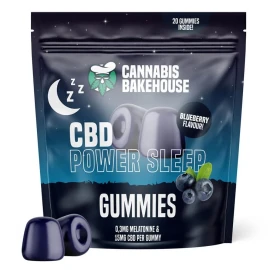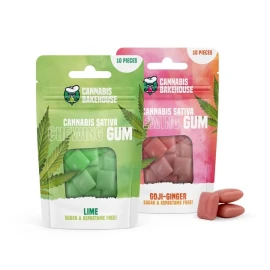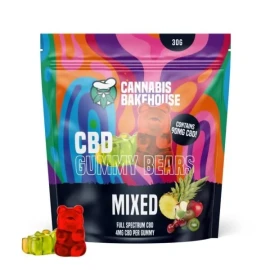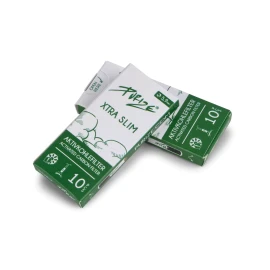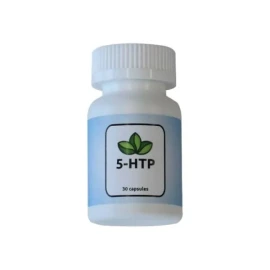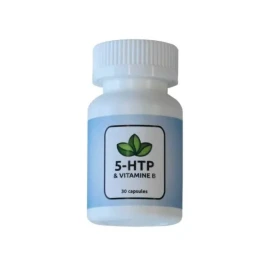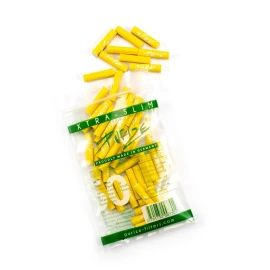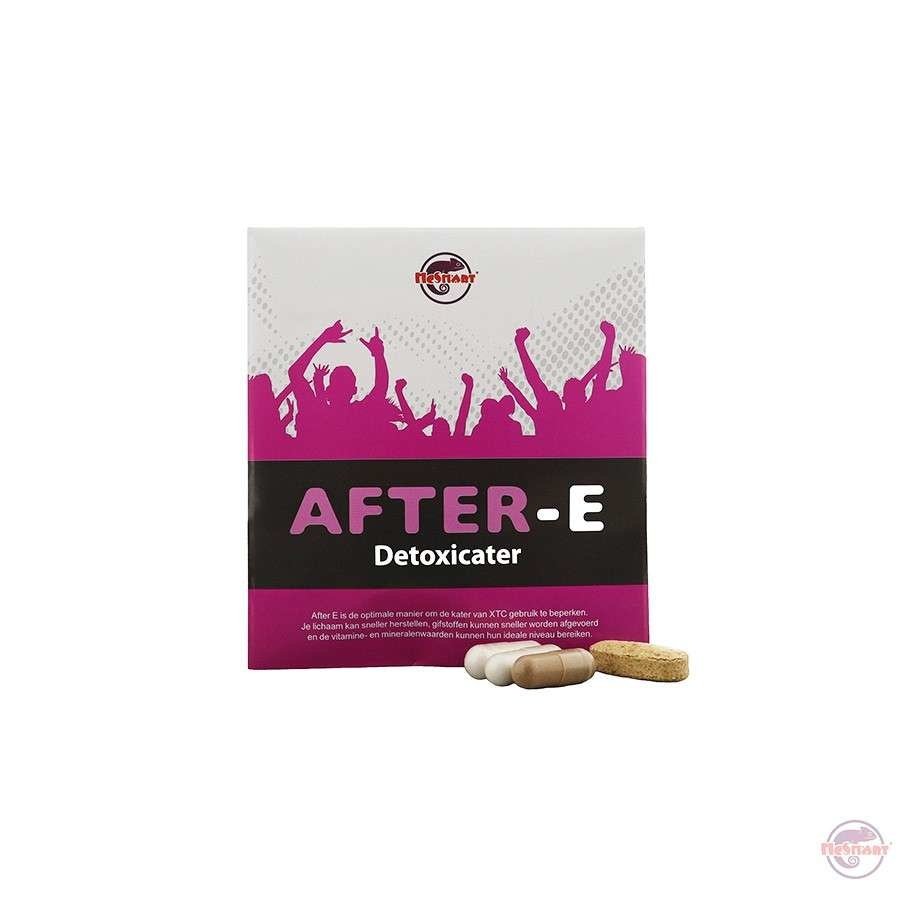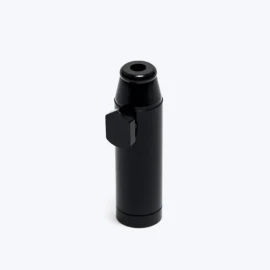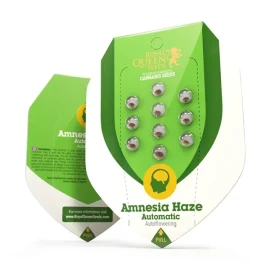CBD Gummy Bears
10,00 €
Why CBD Gummy Bears Have Become a Global Phenomenon
CBD gummy bears attract a diverse consumer base including cannabis newcomers seeking gentle introduction, busy professionals preferring convenient dosing, flavor enthusiasts avoiding hemp’s natural taste, and individuals specifically avoiding THC for legal or personal reasons. Market research indicates explosive growth in lab-tested, vegan, and certified THC-free options as consumers become increasingly educated about product quality.
This guide serves curious and cautious global consumers who want evidence-based information about CBD gummy selection, safety protocols, and legal considerations. Whether you’re exploring CBD for the first time or upgrading to higher-quality products, understanding these fundamentals ensures informed purchasing decisions.
What Are CBD Gummy Bears? Product Anatomy and Variants
CBD gummy bears contain cannabidiol extracted from hemp plants, typically formulated as isolate (pure CBD), broad-spectrum (multiple cannabinoids minus THC), or full-spectrum (trace THC levels within legal limits). The gummy matrix combines CBD extract with sweeteners like cane sugar or stevia, natural or artificial flavorings, gelatin or pectin for texture, and colorants for visual appeal.
Standard potency ranges from 5-25 mg CBD per gummy, with bottle totals typically containing 300-1500 mg total CBD content. Individual gummies allow precise dosing compared to oils requiring measurement, making them particularly appealing for consistent daily routines.
Modern formulations often incorporate complementary ingredients including melatonin for sleep support, valerian root for relaxation, adaptogenic herbs like ashwagandha, essential vitamins, or cannabinoid combinations such as CBD with CBG for enhanced effects. These targeted blends address specific wellness goals while maintaining the convenience factor that makes gummies popular.
Manufacturing quality varies significantly between producers, with premium brands using organic hemp sources, natural flavoring systems, and pharmaceutical-grade extraction methods. Lower-quality products may contain artificial additives, residual solvents from poor extraction, or inconsistent CBD distribution throughout the gummy batch.
How CBD Gummies Work: Pharmacokinetics and Practical Onset
CBD gummies follow the digestive route, traveling through your gastrointestinal tract where stomach acid and digestive enzymes begin breaking down the gummy matrix. The CBD then passes through the liver via first-pass metabolism, where cytochrome P450 enzymes process the compound before it enters systemic circulation. This pathway creates slower onset compared to sublingual oils or inhalation methods but provides extended duration.
Typical onset occurs within 30-90 minutes after consumption, though individual factors like metabolism, recent food intake, and body composition influence timing. Peak effects generally manifest 2-4 hours post-consumption, with therapeutic benefits potentially lasting 6-8 hours or longer. This extended duration makes gummies ideal for all-day symptom management or overnight sleep support.
Formulation factors significantly impact absorption efficiency. Gummies containing MCT oil or other healthy fats may enhance bioavailability since CBD is fat-soluble. The gummy matrix itself affects release rates – harder gummies may delay onset while softer formulations allow faster dissolution. Full-spectrum products potentially benefit from the “entourage effect,” where multiple cannabinoids work synergistically, though broad-spectrum and isolate forms offer predictable, THC-free experiences.
The endocannabinoid system interaction involves CB1 and CB2 receptors throughout your body, though CBD’s mechanism remains complex and not fully understood. Unlike THC, CBD doesn’t directly bind to these receptors but appears to modulate the system indirectly, potentially explaining its non-intoxicating effects while still providing therapeutic benefits.
Benefits: What Current Evidence Actually Supports
Current research on CBD remains in relatively early stages, with most human studies focusing on specific medical conditions rather than general wellness applications. Anecdotal reports consistently describe stress and anxiety reduction, improved sleep quality, and mild pain relief as primary benefits. However, it’s crucial to distinguish between promising preliminary evidence and definitive therapeutic claims.
Published peer-reviewed studies show some evidence for CBD’s anxiolytic properties, particularly in social anxiety scenarios and stress response modulation. Sleep research indicates potential benefits for sleep latency and quality, though optimal dosing protocols require further investigation. Pain management studies suggest anti-inflammatory properties that may contribute to discomfort reduction, particularly for exercise-related soreness or minor aches.
The FDA has approved one CBD-based medication for specific epilepsy conditions, demonstrating therapeutic potential under controlled circumstances. However, this pharmaceutical-grade preparation differs significantly from consumer gummy products in purity, dosing precision, and clinical oversight. Consumer products should be viewed as wellness supplements rather than medical treatments.
Emerging research explores CBD’s potential in various applications including athletic recovery, cognitive support, and general wellness maintenance. Many users combine CBD gummies with other wellness practices like meditation, exercise, or stress management techniques. Remember that individual responses vary significantly, and what works for others may not produce identical effects for you.
Risks, Side Effects and Drug Interactions
Common side effects include mild drowsiness, gastrointestinal upset, dry mouth, and appetite changes. Most users experience minimal adverse effects when starting with appropriate doses, though sensitivity varies considerably between individuals. Drowsiness represents the most frequently reported side effect, particularly relevant for daytime use or when operating vehicles.
Drug interactions pose more serious concerns due to CBD’s impact on cytochrome P450 enzymes, particularly CYP3A4 and CYP2C19. These enzymes metabolize numerous prescription medications including anticoagulants like warfarin, anticonvulsants such as phenytoin, and certain antidepressants. CBD can potentially increase or decrease these medications’ blood levels, creating either reduced efficacy or enhanced side effects.
Special populations require additional caution. Pregnant and breastfeeding women should avoid CBD products due to insufficient safety data during these critical periods. Children should only use CBD under direct medical supervision with appropriate pediatric formulations. Elderly users may experience enhanced sensitivity and should start with lower doses while monitoring for interactions with existing medications.
People with liver disease require closer monitoring since CBD metabolism occurs primarily in the liver. Regular blood work may be necessary to ensure safe ongoing use. Additionally, individuals with bleeding disorders should exercise caution due to potential interactions with anticoagulant medications.
Regarding drug testing, THC-free CBD products still carry some risk. Full-spectrum products contain trace THC levels that could theoretically accumulate with frequent use. Even broad-spectrum and isolate products may contain THC contamination from poor manufacturing or cross-contamination. If drug testing is a concern, choose products with verified non-detect THC levels and maintain detailed COA documentation.
Quality, Safety and Product Consistency: The Industry’s Major Problems
Independent laboratory studies reveal alarming inconsistencies in CBD product labeling, with some analyses showing up to 70% of tested products containing inaccurate potency claims or unexpected THC levels. These mislabeling issues create real-world consequences including failed drug tests, unintentional intoxication, and inconsistent therapeutic effects that undermine consumer confidence.
Contamination concerns extend beyond THC to include pesticides from untested hemp cultivation, heavy metals like lead and mercury from soil contamination, residual solvents from extraction processes, and microbial contamination from inadequate storage or processing. Professional laboratories test for these contaminants using validated methods with established safety limits.
Third-party testing represents the gold standard for product verification. Independent laboratories following ISO 17025 accreditation standards or Good Laboratory Practices provide unbiased analysis compared to in-house testing that may present conflicts of interest. Reputable testing facilities maintain chain of custody protocols and use multiple analytical methods to confirm results.
Comprehensive Certificates of Analysis (COAs) display cannabinoid profiles showing CBD, CBDA, THC, and other cannabinoids present. Potency testing indicates milligrams per gram or per unit, with acceptable variance ranges typically within 10-15% of labeled claims. Contaminant panels screen for pesticides, heavy metals, residual solvents, and microbial contamination with clear pass/fail indicators.
When reviewing COAs, verify the batch number matches your product packaging exactly. Check testing dates to ensure recent analysis – COAs older than one year may not reflect current production quality. Confirm the testing laboratory’s accreditation and reputation within the industry. Look for limits of detection and quantification for THC testing, with non-detect (ND) or below limit of quantification (BLQ) preferred for truly THC-free products.
Global Legal Landscape: Understanding ‘THC-Free’ Across Regions
Legal definitions of “THC-free” vary dramatically across jurisdictions, creating confusion for consumers and compliance challenges for manufacturers. Understanding these differences is essential for safe purchasing and travel with CBD products.
United States: Federal hemp legislation permits CBD products derived from hemp containing less than 0.3% delta-9 THC on a dry weight basis. However, state regulations vary significantly, with some states maintaining stricter limits or additional testing requirements. Interstate shipping generally follows federal guidelines, but local possession laws may differ.
European Union and United Kingdom: Most EU member states require stricter THC limits, often demanding non-detect levels or maximum 0.2% THC content. Some countries like France and Italy maintain even more restrictive policies. Brexit has created additional complexity for UK imports, with evolving regulations requiring careful monitoring. Cross-border shipping within the EU may face customs scrutiny despite legal compliance.
Asia-Pacific Region: Many Asian countries maintain zero-tolerance policies for CBD and all cannabis derivatives. Singapore, Thailand, and others impose severe penalties for possession regardless of THC content. Australia requires prescription access through medical cannabis programs. New Zealand permits some CBD products but with strict regulatory oversight.
Canada: CBD operates within the regulated cannabis market, requiring licensed producers and retailers. Products must meet Health Canada standards for testing and labeling. The legal framework differs substantially from the US supplement approach.
Before purchasing or traveling with CBD gummies, research destination laws thoroughly. Carry original packaging and COAs showing compliance with local regulations. Consider purchasing domestic products to avoid customs complications, and never assume “THC-free” labeling guarantees legal compliance across borders.
Reading CBD Gummy Labels Like a Professional
Ingredient transparency starts with clear CBD source identification including hemp strain origin, extraction method, and spectrum type (full, broad, or isolate). Quality manufacturers specify organic certification, extraction solvent (CO2 preferred), and processing location. Non-CBD ingredients should list specific sweeteners, gelatin versus pectin for vegan consumers, allergen warnings for soy or gluten, and sugar or alcohol content for dietary restrictions.
Potency clarity requires explicit milligram amounts per individual gummy and total container contents. Serving size recommendations and suggested intervals between doses help consumers establish consistent routines. Avoid products using vague terms like “high strength” without specific milligram quantities.
Batch information enables traceability including manufacturing date, expiration date, and batch or lot numbers that correspond to COA documentation. This information allows consumers to verify their specific product underwent testing rather than relying on representative batch analysis.
Certifications and trust signals include third-party laboratory links, ISO 17025 accreditation for testing facilities, Good Manufacturing Practice (GMP) compliance, and legitimate organic certifications. Distinguish between certified claims and self-proclaimed quality statements that lack independent verification.
Label Red Flags to Avoid:
- Missing or inaccessible COA documentation
- Batch numbers that don’t match COA reports
- Vague potency descriptions without specific milligrams
- Medical cure or diagnosis claims prohibited by regulations
- Missing contact information or unresponsive customer service
- Prices significantly below market averages suggesting quality compromises
Choosing the Right Gummies: Strategic Dosing and Personal Optimization
Successful CBD gummy use begins with conservative dosing strategies that allow individual assessment of effects and tolerance. The “start low and go slow” approach minimizes side effects while identifying optimal therapeutic levels for your specific needs and body chemistry.
Initial Dosing Framework:
Begin with 5-10 mg CBD once daily, preferably at the same time each day to establish consistent blood levels. Maintain this dose for 3-7 days while monitoring effects and any side effects. If no negative reactions occur and desired benefits remain insufficient, increase by 5-10 mg increments weekly until achieving optimal results.
Typical Dosing Ranges:
Research and anecdotal evidence suggest 5-25 mg daily for mild symptoms like occasional stress or minor sleep difficulties. More persistent concerns may benefit from 25-50 mg daily, though individual variation means these ranges serve only as starting guidelines. No universally agreed upper safety limit exists, making medical consultation advisable for higher doses.
Timing and Frequency Considerations:
Evening consumption suits sleep support goals, while morning or midday use addresses anxiety or stress management. Monitor for daytime drowsiness that could impair driving or work performance. Some users prefer splitting doses between morning and evening for consistent coverage.
Special Population Adjustments:
Elderly users should start with lower doses (2.5-5 mg) and monitor for enhanced sensitivity or interactions with existing medications. Athletes must consider anti-doping regulations and select rigorously tested broad-spectrum products with verified non-detect THC levels. Children require medical supervision and specialized pediatric formulations.
Combination Considerations:
CBD with melatonin may enhance sleep effects but could increase morning grogginess. Adaptogenic herbs like ashwagandha may complement stress-reduction benefits. Monitor cumulative sedative effects when combining multiple relaxation-promoting supplements.
Practical Buying Filters:
Consider potency per gummy for consistent dosing, vegan or gelatin-free options for dietary preferences, sugar-free or keto-friendly formulations, flavor variety for sustained use, added beneficial ingredients, and cost per milligram for value assessment.
Format Comparison: CBD Gummies Versus Other Delivery Methods
Gummy Advantages:
Pre-measured dosing eliminates guesswork and measurement errors common with oils. Pleasant flavors mask hemp’s natural taste that some users find off-putting. Discreet consumption allows use in public or professional settings without attention. Shelf stability and portability make travel convenient. Extended duration suits all-day symptom management.
Gummy Limitations:
Slower onset (30-90 minutes) compared to sublingual oils (15-30 minutes) or inhalation methods (immediate). Variable bioavailability due to digestive factors and first-pass metabolism. Sugar content may concern diabetic users or those following strict dietary protocols. Risk of overconsumption due to candy-like appearance and taste.
Quick Comparison Overview:
- Oils/Tinctures: Faster onset, adjustable dosing, but requires measurement and hemp taste
- Capsules: Precise dosing, tasteless, but similar slow onset as gummies
- Vape Products: Immediate onset, but shorter duration and potential lung concerns
- Topicals: Localized effects, no systemic absorption, but limited to surface applications
Red Flags: Identifying Low-Quality or Dangerous Products
Documentation Red Flags:
- COAs that don’t match your product’s batch number
- Testing reports older than one year
- Missing accreditation information for testing laboratories
- Vague or incomplete contaminant screening results
Marketing Red Flags:
- Medical cure claims for cancer, diabetes, or other serious conditions
- “Proprietary blend” ingredients without specific quantities
- Extreme health promises lacking scientific support
- Pressure tactics or limited-time offers creating urgency
Business Practice Red Flags:
- Missing physical address or contact information
- Unresponsive customer service or evasive answers about testing
- Prices dramatically below market rates suggesting quality shortcuts
- No return policy or satisfaction guarantees
Product Red Flags:
- Confusing potency claims mixing hemp oil with CBD content
- Missing ingredient lists or allergen warnings
- Unprofessional packaging or labeling errors
- Strong artificial coloring or overwhelming artificial flavors
Frequently Asked Questions
Do CBD gummies get you high?
Properly manufactured THC-free CBD gummies should not produce intoxicating effects. CBD is non-psychoactive, meaning it doesn’t bind to CB1 receptors responsible for THC’s “high.” However, full-spectrum products containing trace THC levels might cause mild effects in sensitive individuals or with high consumption.
Will CBD gummies show up on drug tests?
THC-free CBD products pose minimal drug test risk, but contamination remains possible. Full-spectrum products contain trace THC that could theoretically accumulate with frequent use. Choose broad-spectrum or isolate products with verified non-detect THC levels if drug testing is a concern.
Are THC-free gummies truly THC-free?
“THC-free” definitions vary by jurisdiction and manufacturer. Some products labeled THC-free may contain trace amounts below detection limits. Look for COAs showing “non-detect” or “below limit of quantification” for THC rather than simply “THC-free” marketing claims.
How long do CBD gummies take to work?
Onset typically occurs 30-90 minutes after consumption, with peak effects around 2-4 hours. Individual factors including metabolism, recent food intake, and body composition influence timing. Empty stomach consumption may accelerate onset while fatty meals might enhance absorption.
How much CBD should I take in a gummy?
Start with 5-10 mg and maintain for 3-7 days before increasing. Most users find effective doses between 5-50 mg daily, though individual needs vary significantly. Consult healthcare providers for guidance, especially if taking other medications or managing specific health conditions.
Are CBD gummies safe for children or pregnant women?
Pregnant and breastfeeding women should avoid CBD products due to insufficient safety data. Children should only use CBD under direct medical supervision with appropriate pediatric formulations and dosing protocols.
How do I verify a CBD gummy’s COA?
Match the batch number on your product packaging to the COA batch number exactly. Verify the testing laboratory’s accreditation and reputation. Check for recent testing dates and comprehensive panels including cannabinoids and contaminants. Ensure THC results show non-detect or below quantification limits.
What’s the difference between full-spectrum, broad-spectrum, and isolate gummies?
Full-spectrum contains all hemp compounds including trace THC within legal limits. Broad-spectrum includes multiple cannabinoids but removes THC completely. Isolate contains pure CBD only. Each offers different benefits and legal considerations depending on your needs and local regulations.
Can I take CBD gummies with prescription medications?
CBD may interact with medications metabolized by cytochrome P450 enzymes, potentially altering drug blood levels. Consult your healthcare provider or pharmacist before combining CBD with prescription medications, especially anticoagulants, anticonvulsants, or antidepressants.
Are vegan and keto CBD gummies available?
Yes, many manufacturers offer vegan gummies using pectin instead of gelatin, and sugar-free options suitable for ketogenic diets. Check ingredient lists carefully for hidden animal products or high-carbohydrate sweeteners that might conflict with dietary restrictions.
Essential Takeaway Checklist
Quality CBD gummy selection requires diligent verification and conservative approach to ensure safety and effectiveness. The market’s current inconsistencies make consumer education and careful product evaluation essential for positive experiences.
Your 6-Point Safety Checklist:
- Verify COA authenticity – Match batch numbers and confirm recent testing dates
- Confirm laboratory accreditation – Look for ISO 17025 or equivalent credentials
- Start with low doses – Begin with 5-10 mg and increase gradually
- Monitor for side effects – Watch for drowsiness, GI upset, or drug interactions
- Check local laws – Understand THC limits and CBD legality in your jurisdiction
- Consult healthcare providers – Discuss CBD use with medical professionals, especially if taking medications
Remember that CBD gummies represent a wellness supplement, not a medical treatment. Individual responses vary significantly, and what works for others may not produce identical effects for you. Prioritize quality verification, conservative dosing, and professional guidance for the safest and most effective experience with CBD gummy products.
The rapidly evolving regulatory landscape and ongoing research mean staying informed about new developments in CBD science and policy remains important for responsible use. Choose reputable manufacturers committed to transparency, rigorous testing, and consumer education to ensure you receive safe, effective products that meet your wellness goals.
Related Products
Frequently Asked Questions
Everything You Need to Know

